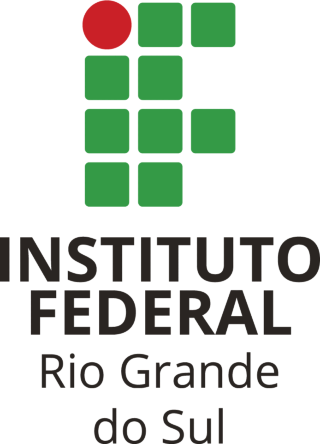Labirino: estratégia pedagógica para auxiliar no desenvolvimento do pensamento computacional na educação infantil
| Title: | Labirino: estratégia pedagógica para auxiliar no desenvolvimento do pensamento computacional na educação infantil |
| Author: | Welausen, Fillipe da Silva |
| Abstract: |
Nos últimos anos, o Pensamento Computacional (PC) começou a ser adotado em estratégias pedagógicas nos diversos níveis da Educação Básica: Educação Infantil, Ensino Fundamental (anos iniciais e finais) e Ensino Médio. A inclusão do PC na educação básica foi influenciada por diversos fatores, em especial o documento “Computação complemento à BNCC”, o qual apresenta habilidades, competências e objetivos de aprendizagem, para todo o Brasil, sobre o ensino de computação na educação básica, incluindo o pensamento computacional; e a Política Nacional de Educação Digital (PNED), instituída pela Lei Nº 14.533, de 11 de janeiro de 2023. Essa política apresenta o pensamento computacional como um dos objetivos para a Educação Digital Escolar. Embora várias regulamentações existam, com base em uma investigação em algumas bases de dados é possível afirmar que há uma escassez de trabalhos que abordem esse tema na educação infantil. Considerando esta problemática, a presente pesquisa tenta responder a seguinte questão: Como introduzir o pensamento computacional no contexto da educação infantil? A estratégia para solucionar o problema identificado foi realizar uma análise da BNCC e das DCNEI (Diretrizes Curriculares Nacionais da Educação Infantil) e concentrar-se nos eixos estruturantes das práticas pedagógicas: as interações e a brincadeira. Nesse contexto, a pesquisa propõe o uso de um jogo desplugado, que pode ser abordado a partir de textos da literatura infantil. A ideia é apresentar os conceitos do pensamento computacional na educação infantil relacionando-os com alguma história lúdica e com o jogo desenvolvido por este trabalho. O jogo, denominado LABIRINO, foi organizado para ser jogado de dois modos: (i) um usando apenas os mapas táteis que formam um labirinto, onde a criança pode criar uma história e desenhar em papel os caminhos a serem percorridos pelo(s) seu(s) personagem(ns); e, (ii) o outro modo de utilizá-lo consiste no uso de labirintos programados, que possuem uma única solução. A presente pesquisa tem abordagem predominantemente qualitativa, sendo que foram selecionados para a condução da investigação a pesquisa exploratória, utilizando-sede pesquisa bibliográfica, pesquisa documental e estudo de caso. O estudo de caso foi realizado com docentes de uma escola na cidade de Esteio, no Rio Grande do Sul, através de uma oficina que abordou a temática do pensamento computacional e possibilitou que os participantes jogassem o jogo. Após, alguns dos participantes aplicaram o jogo em sala de aula e analisaram suas fragilidades e potencialidades. Sobre a avaliação do LABIRINO os dados coletados apontam que os oito participantes concordam totalmente que o jogo auxilia no desenvolvimento do pensamento computacional, que o uso de labirintos e efeitos sonoros contribui para a aprendizagem e para o desenvolvimento dos objetivos de aprendizagem delimitados na BNCC, e a possibilidade de contar histórias com os blocos lógicos auxiliam na resolução de problemas e na compreensão do conceito de algoritmos. In recent years, Computational Thinking (CP) began to be adopted in pedagogical strategies at different levels of Basic Education: Kindergarten, Elementary School (initial and final years) and High School. The inclusion of CT in basic education was influenced by several factors, in particular the document “Computação Complement à BNCC”, which presents skills, competencies and learning objectives, for all of Brazil, on teaching computing in basic education, including computational thinking; and the National Policy on Digital Education (PNED), instituted by Law No. 14,533, of January 11, 2023. This policy presents computational thinking as one of the objectives for School Digital Education. Although several regulations exist, based on an investigation in some databases, it is possible to state that there is a shortage of works that address this topic in early childhood education. Considering this problem, this research tries to answer the following question: How to introduce computational thinking in the context of early childhood education? The strategy to solve the identified problem was to carry out an analysis of the BNCC and the DCNEI (National Curriculum Guidelines for Early Childhood Education) and focus on the structuring axes of pedagogical practices: interactions and play. In this context, the research proposes the use of an unplugged game, which can be approached from texts of children's literature. The idea is to present the concepts of computational thinking in early childhood education, relating them to a playful story and the game developed by this work. The game, called LABIRINO, was organized to be played in two ways: (i) one using only the tactile maps that form a labyrinth, where the child can create a story and draw on paper the paths to be followed by his/her character(s); and, (ii) the other way of using it consists of using programmed mazes, which have a single solution. This research has a predominantly qualitative approach, and exploratory research was selected for conducting the investigation, using bibliographical research, documental research and case study. The case study was carried out with teachers from a school in Esteio, through a workshop that addressed the theme of computational thinking and allowed participants to play the game. Afterwards, some of the participants applied the game in the classroom and analyzed its weaknesses and strengths. Although it could be played in two ways, the participants chose to use it only with the programmed mazes. Regarding the evaluation of LABIRINO, the collected data indicate that the eight participants fully agree that the game helps in the development of computational thinking, that the use of mazes and sound effects contributes to learning and to the development of the learning objectives delimited in the BNCC, and the possibility of storytelling with logic blocks helps in solving problems and understanding the concept of algorithms. |
| URI: | https://dspace.ifrs.edu.br/xmlui/handle/123456789/874 |
| Date: | 2023 |
Files in this item
| Files | Size | Format | View | Description |
|---|---|---|---|---|
| 123456789874.pdf | 6.079Mb |
View/ |
Texto completo |



